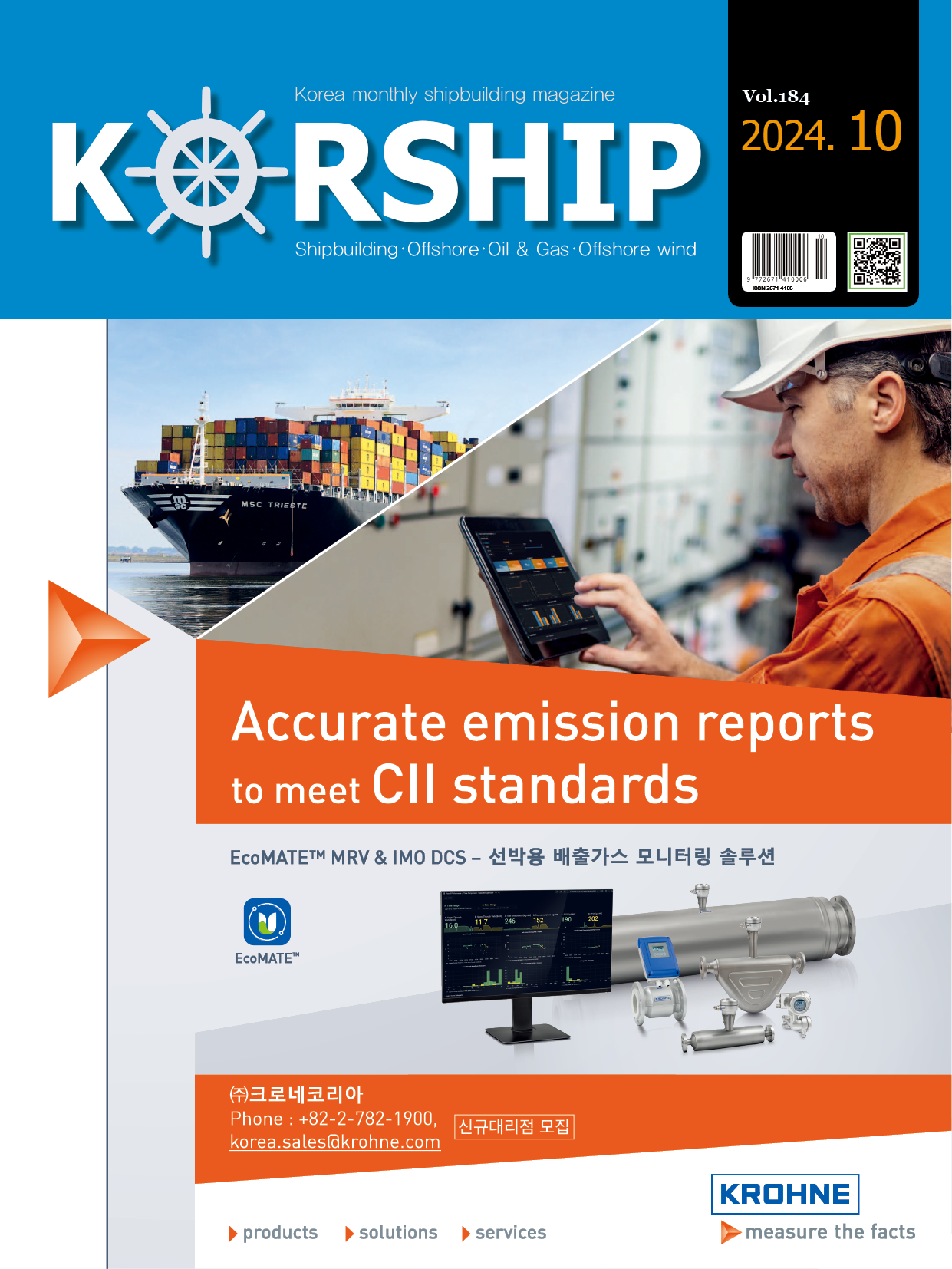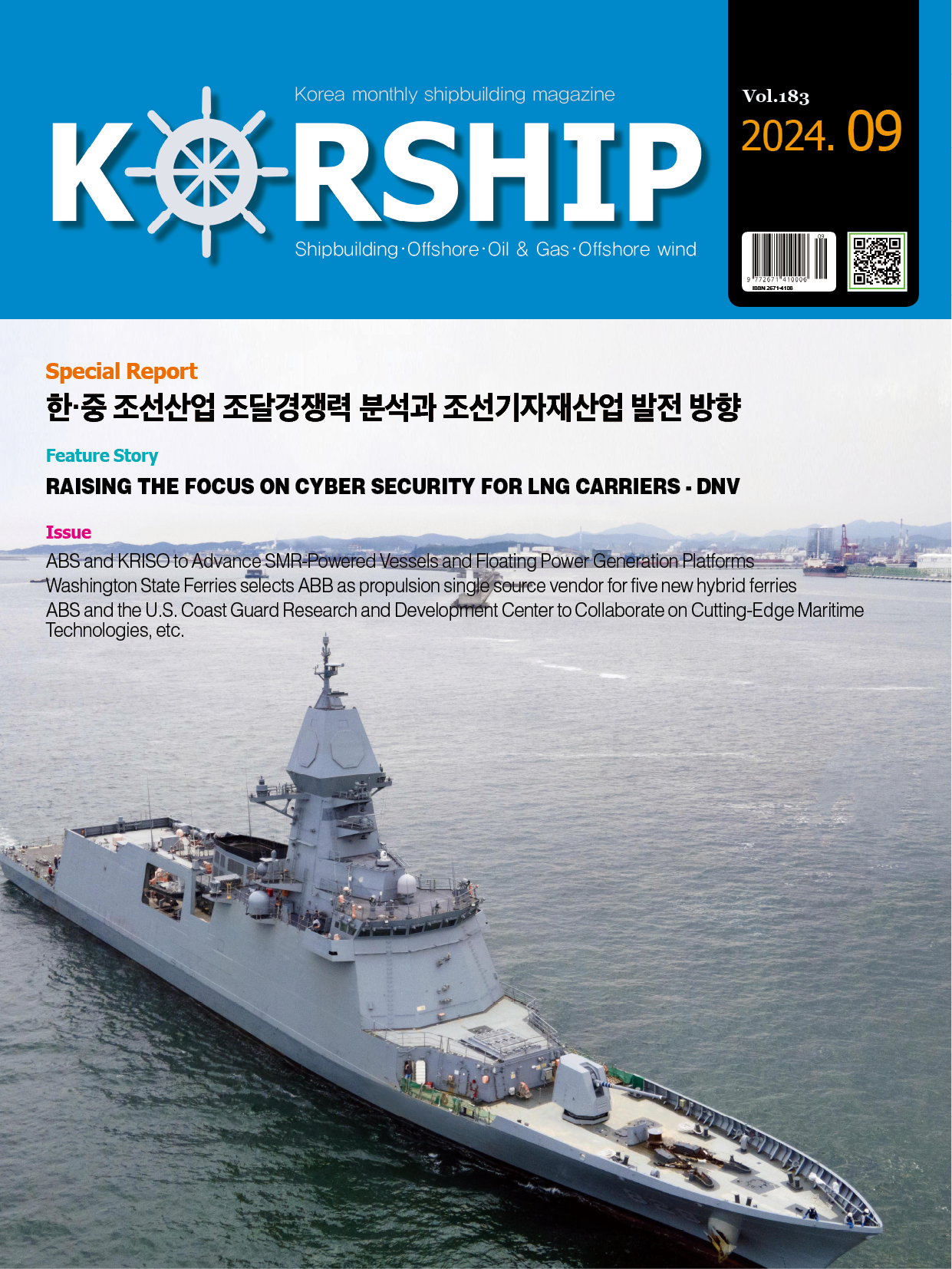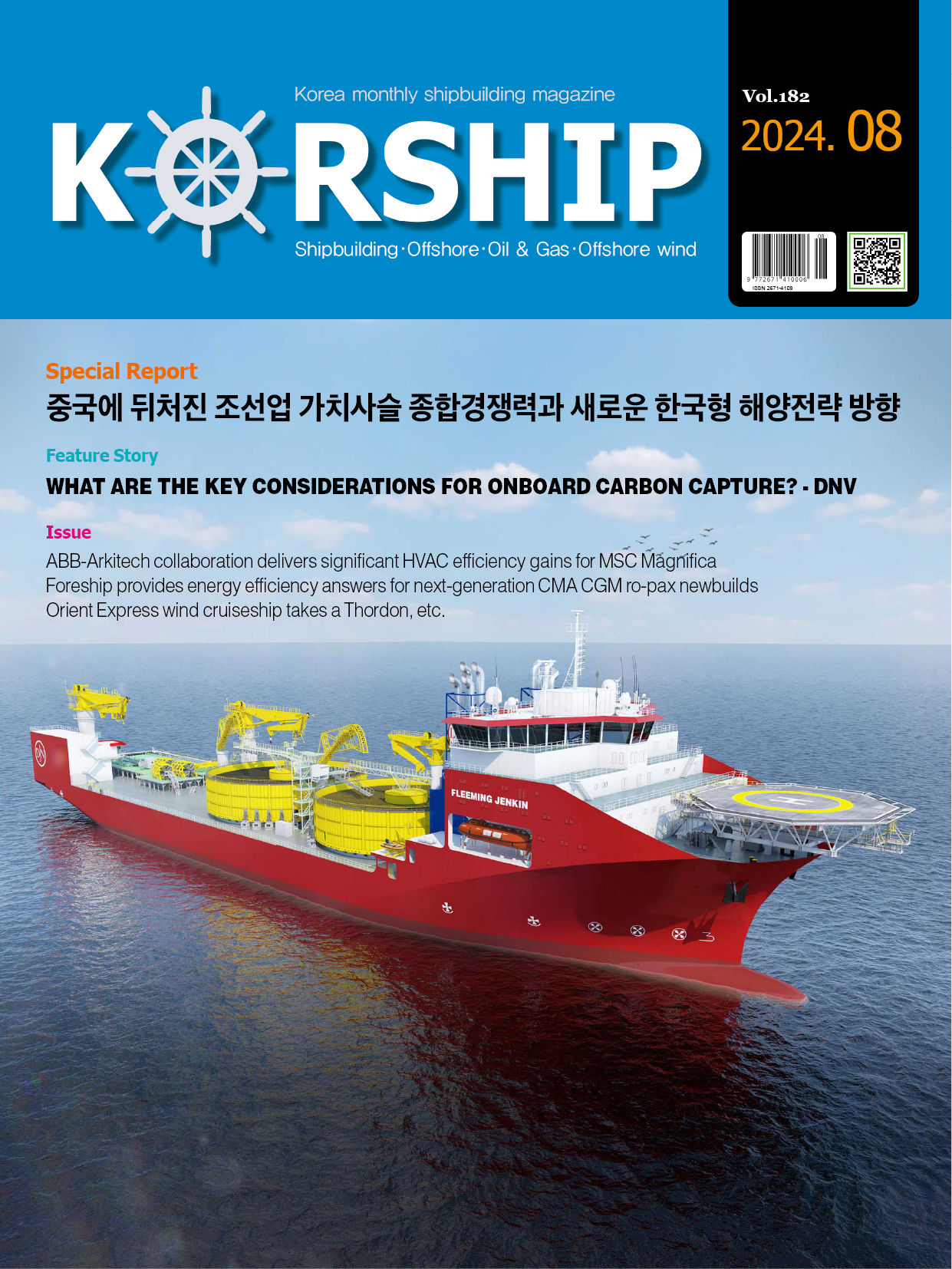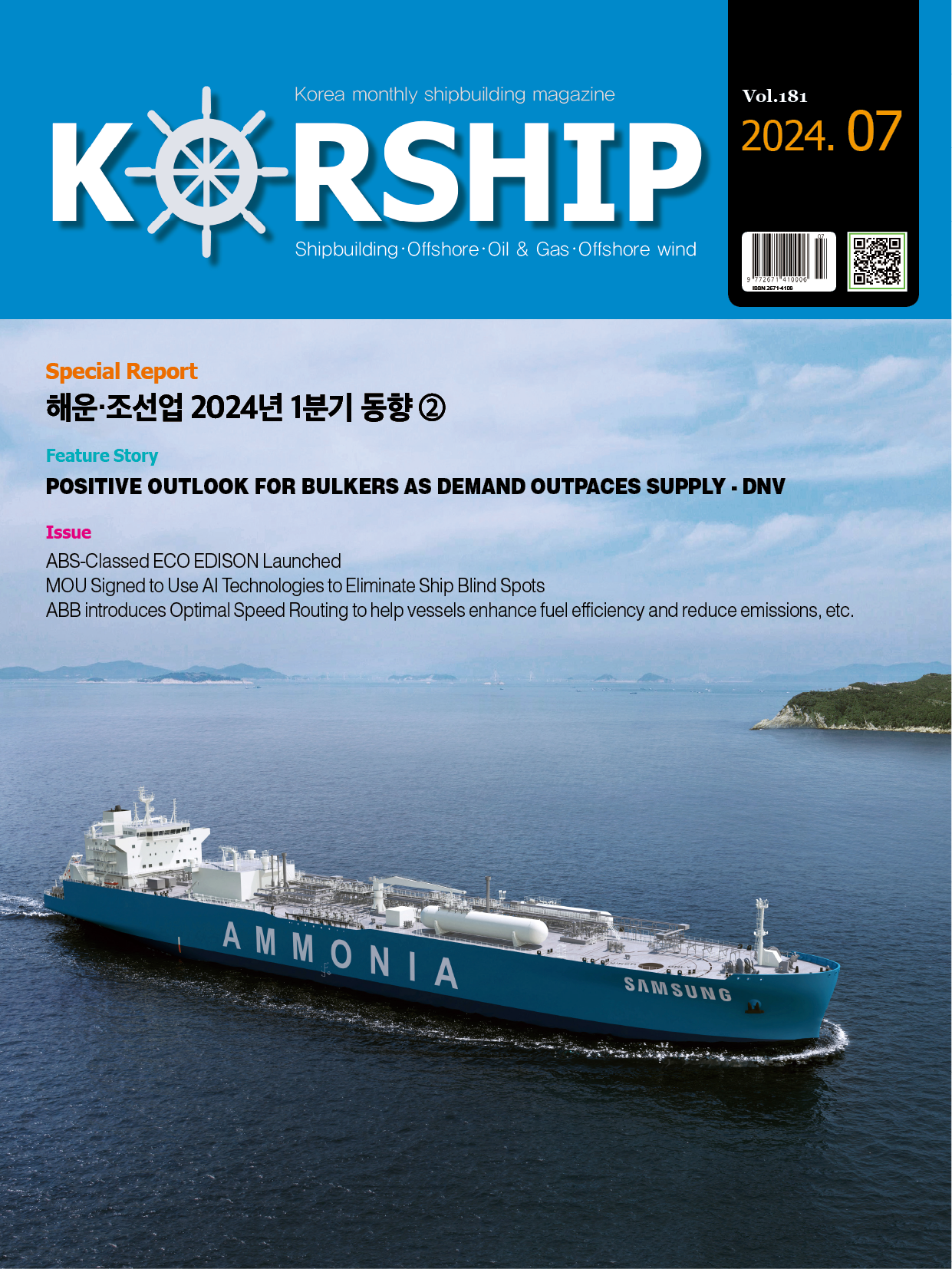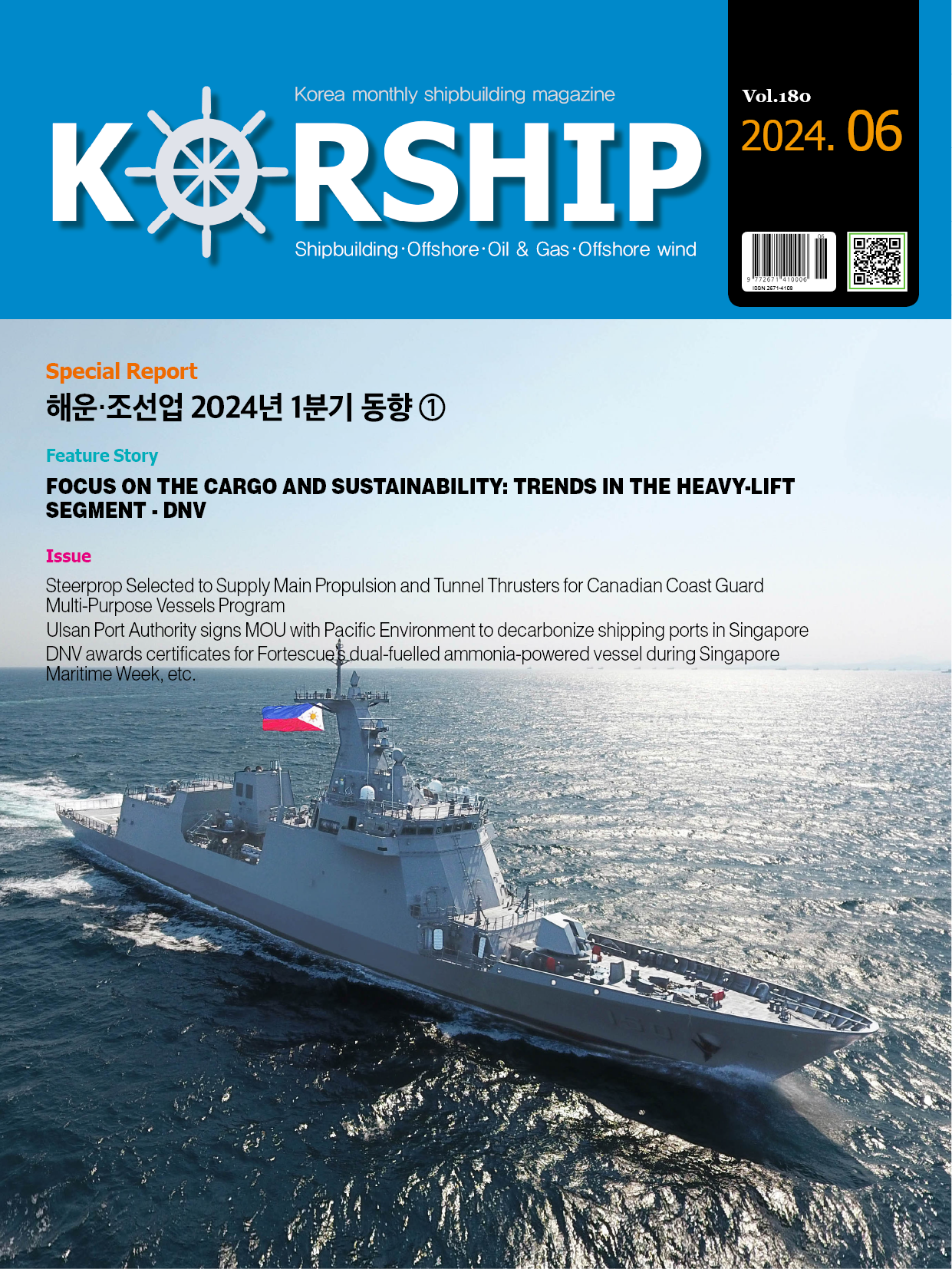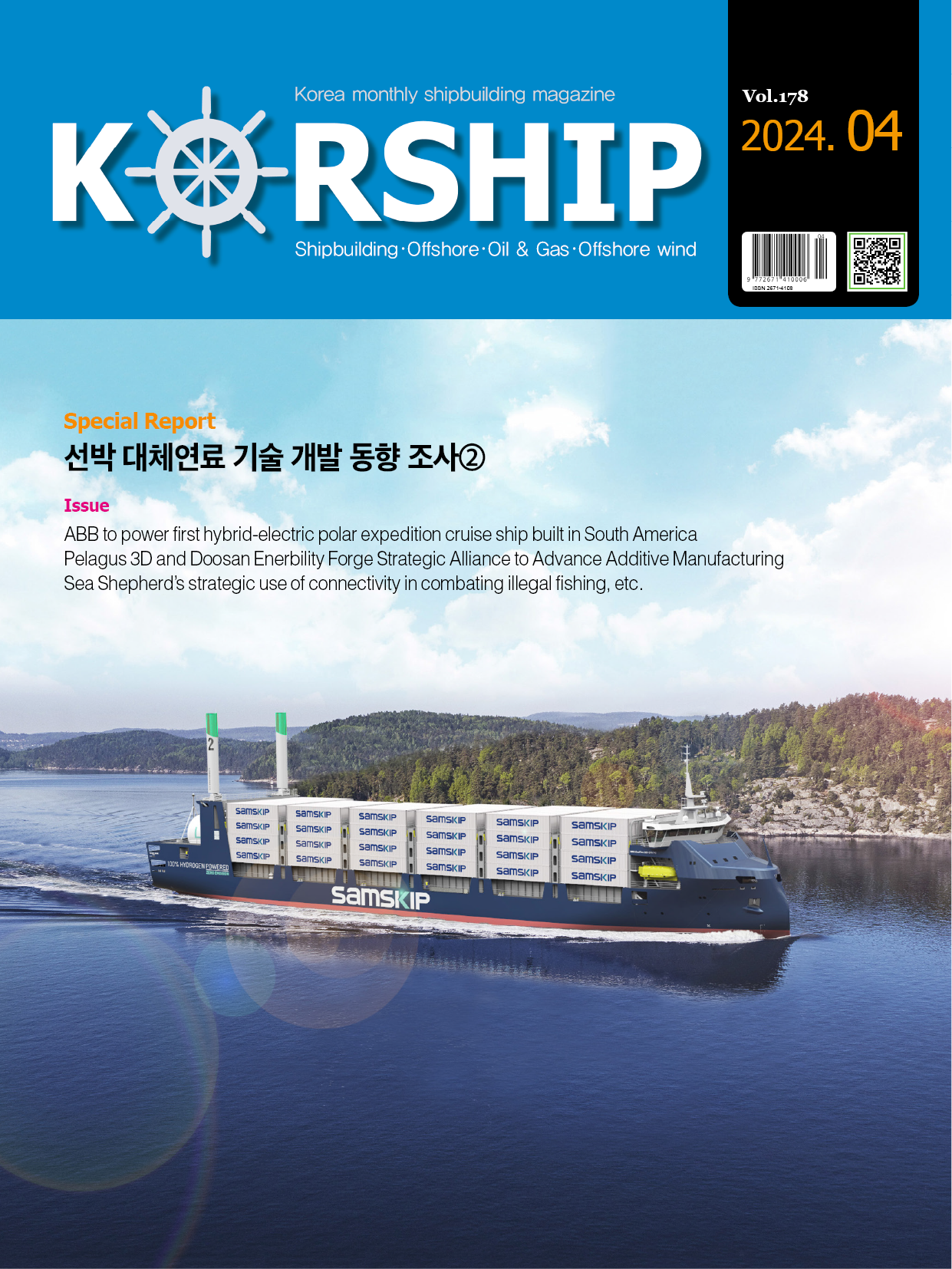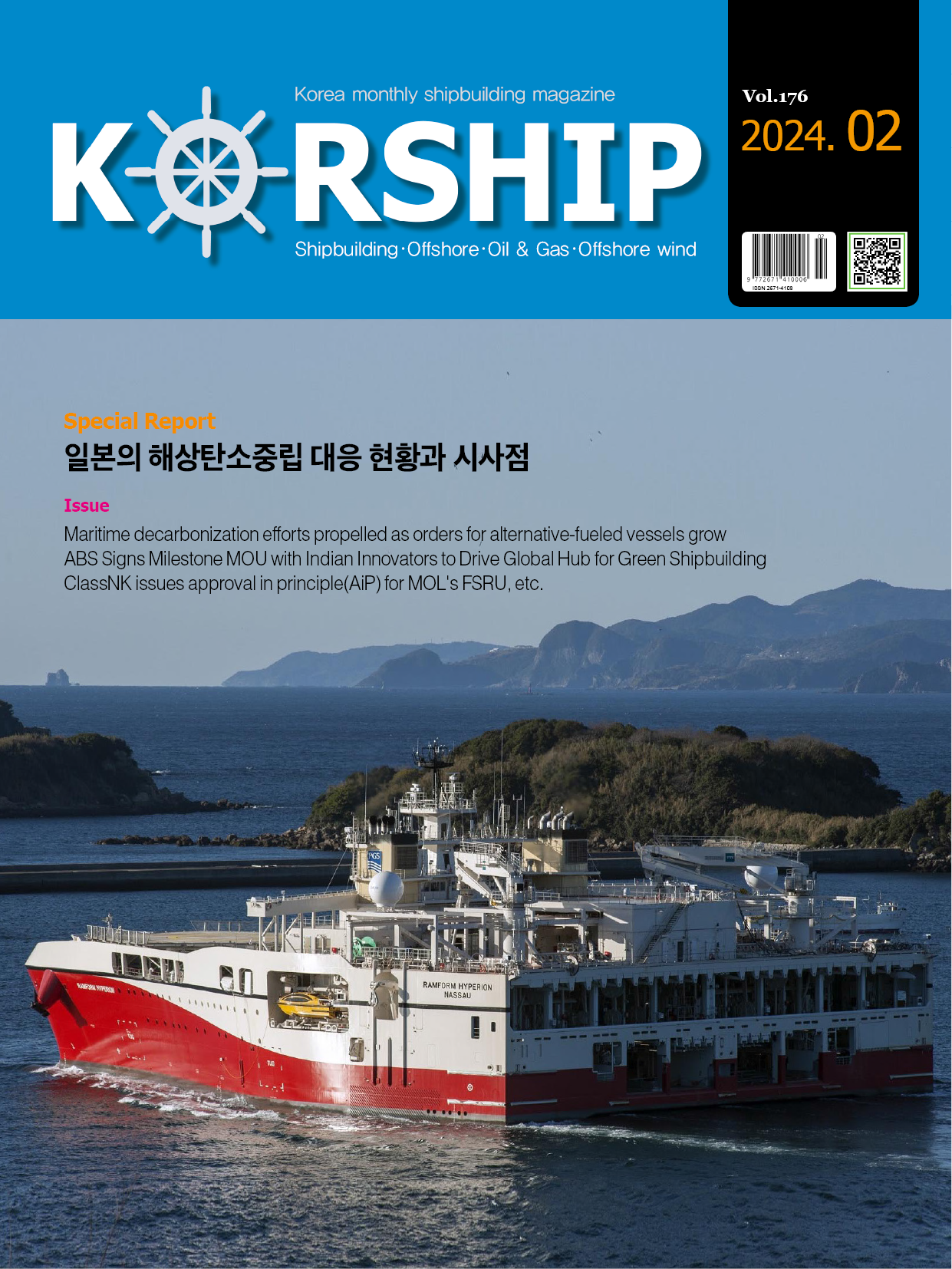Special Report A Result of On-Site Survey and Demand Analysis for Ship Repair Industr…
페이지 정보
작성자 최고관리자 댓글 0건 조회 3,674회 작성일 19-05-24 20:54본문
Ⅰ. Introduction
Korean shipbuilding industry has built up competitiveness underpinned by its technological prowess and high productivity. According to Kim(2013), many small and medium-sized shipyards have been forced to scale back as a consequence of decline in ship prices and unfavorable foreign exchange rate, etc., amid the emergence of new shipbuilding countries in 2000s. Many shipyards in Korea, China and Japan have been undergoing the restructuring in the face of global shipbuilding downturn arising from sustained low oil prices and glut of supply since 2010.
To maintain competitiveness of shipbuilding industry in the rapidly changing global industrial environment, Park(2013) suggested that domestic shipyards would need to sharpen their competitive edge constantly or advance into new fields of business. Recent oversupply in domestic shipyards might be mitigated through entry into the ship repair and ship service markets. Ship repair industry can be said to be an area where existing shipyards can leverage their technologies and infrastructures effectively. For small and medium-sized shipyards that need to lay foundation for their ship repair business abroad, the diversification of business portfolios is essential for coping with ever-more serious glut of supply against the capacity. Particularly, ship repair represents the segment where domestic companies can tap into their current technologies and cheap labor in oversea countries. According to Park and Kwon(2013), the South Pacific Region is considered to provide optimal conditions for laying groundwork for small and medium-sized ship repair business, including the repair of deep-sea fishing vessels. South Pacific Region is a major fishing ground accounting for more than 95% of all domestic tuna catches. According to Marine Traffic(2017), approximately 4,600 deep-sea fishing vessels are operating based on the number of vessels outfitted with Automatic Identification System(AIS). For domestic shipbuilding and offshore industry, it has become increasingly necessary to expand the reach into ship repair market in the South Pacific Region. Domestic shipbuilding and offshore industry had made significant stride particularly in newbuilding market until 2010, according to Park(2010), and has been facing the challenge to diversify business portfolio, like making foray into ship service market, etc., amid sluggishness in global shipbuilding and offshore industry which arose from the glut of supply and sustained low oil prices since 2010. According to Choi(2006), the shipbuilding industry cannot but experience the rise and fall repeatedly due to the plunge in shipbuilding orders and consequent decline in ship prices with a regular cycle(10-20 years), given the large amplitude of business cycle. In addition, Kim et al.(2017) suggested that strategies would need to be mapped out to facilitate the entry into the market for ship service focusing on ship repair, along with specialization of vessels and regions based on strategies tailored to small and medium-sized shipyards, ultimately overcoming the limits which arises from the fact that each project takes 2-3 years to be completed and using the infrastructure of existing workforce and logistics.
This study presented the summary of analyses conducted with the interviews and field survey of related officials and working-level personnel whom the researchers met directly in their visit to Fiji(Suba, Lotoca, Natobi), Kiribati(Tarawa, Betio, Bairiki), Papua New Guinea(Port Moresby, Madang Port), Philippines(General Santos) to explore the sites optimal for ship repair yards in the South Pacific Region and help reinvigorate the marine and fishing industries of the South Pacific Region while finding a way to help Korean shipbuilding industry break out of stagnation. 
Ⅱ. Basic Status of Deep-Sea Fishing Vessels in the South Pacific Region
Current status of domestic and overseas deep-sea fishing vessels operating in the South Pacific Region was examined based on the data available from the WCPFC(Western and Central Pacific Fisheries Commission; www.wcpfc.int) on the vessels registered or licensed.
Of 4,645 fishing boards registered with the WCPFC, the number of fishing vessels by country was like this: Twain ranked the first with 1,659 vessels; Japan ranked the second with 822 vessels; China ranked the third with 618 vessels, Philippines ranked the fourth with 375 vessels; Korea ranked the fifth with 208 vessels; the United States of America ranked the sixth with 207 vessels; Panama ranked the seventh with 108 vessels; Vanuatu ranked the eighth with 105 vessels; Fiji and French Polynesia jointly ranked the ninth with 75 vessels, respectively; and Australia ranked the tenth with 59 vessels.
Of 22 types of vessels registered with the WCPFC, tuna longliners accounted for the largest share with 2,698 units, followed by longliners with 482 units, fish carriers with 425 units, tuna purse seiners with 294 units, purse seiners with 285 units and support vessels with 226 units.
By the ship model(size) of vessels registered with the WCPFC, the tuna longliners with a weight of 50-100 tons comprised the largest proportion with 2,698 units, followed by longliner taking the second largest share with 482 units; vessels with a weight of 30-50 tons(19.1~25.0m) taking the third largest share with 689 units; vessels with a weight of 100-200 tons(30.1~40.0m) taking the fourth largest share with 622 units; vessels with a weight of 1000 tons or higher(80.1m or longer) taking the fifth largest share with 542 units; and vessels with a weight of 500-1000 tons((50.1~80.0m) taking the sixth largest share with 304 units. 

By year of construction among the vessels registered with the WCPFC, the vessels less than 5 years old comprised 12.8% with 596 units, the largest proportion, followed by vessel less than 10 years old(22.9%), vessels less than 15 years old(36.3%), vessels less than 20 years old(47.6%) and vessels older than 20 years old(52.4%), which suggests that there is a preponderance of old vessels.
By the performance of engines mounted on the fishing vessels registered with the WCPFC, the engines with an output of 100-499KW(~670HP) were installed in 2,182 vessels(47.0%), the largest proportion, followed by the engines with an output of 500-999KW(~1,340HP) installed in 1,545 vessels(33.3%); the engines with an output of 1,000-1,999KW(~2,681HP) installed in 337 vessels(7.3%); the engines with an output of 2,000-2,999KW(~4,021HP) installed in 295 vessels(6.4%); and the engines with an output of 3,000-3,999KW(~5,342HP) installed in 98 vessels(2.1%).
Table 1 shows the number and ratio of vessels by country out of the 4,645 registered with the WCPFC, as of 2017. The ratio in the parenthesis was rounded off to the nearest hundredth.
According to Marine Traffic(2017), about 4,645 fishing boats are operating in the Pacific Region when the number of vessels(170,000 units) outfitted with the AIS is taken into account based on the track of vessels(commercial vessel, fishing boats, etc.) and location of major countries on the South Pacific coast. The largest number of fishing boats were found to operate in the area adjacent to Papua New Guinea(Fig. 1), Fiji(Fig. 2), Kiribati(Fig. 3), and Philippines(General Santos)(Fig. 4).
The first group of vessels were selected in respect of the demand for ship repair based on major seawaters where domestic and overseas deep-sea fishing vessels were operating. A total of 2,992 vessels were selected and analyzed with a focus on tuna longliners and tuna purse seiners.
Ⅲ. Analysis of the Demand for Ship Repair in the South Pacific Region
1. Analysis of the demand for repair of deep-sea fishing vessels in major countries
Table 2 shows the data on tuna fishing vessels in Korea, which consist 27 tuna purse seiners and 117 tuna longliners. Most tuna purse seiners are 500 to 1000-ton class while most tuna longliner are 200 to 500-ton class.
Table 3 shows the data on tuna fishing vessels in China, which consist 8 tuna purse seiners and 201 tuna longliners. Most tuna purse seiners are 1000-ton or higher class while most tuna longliner are 100 to 1000-ton class.
Table 4 shows the data on tuna fishing vessels in Taiwan, which consist 34 tuna purse seiners and 1,500 tuna longliners. Most tuna purse seiners are 500 to 1000-ton class while tuna longliner are 20 to 1000-ton class. 

able 5 shows the data on tuna fishing vessels in Japan, which consist of 37 tuna purse seiners and 480 tuna longliners. Most of tuna purse seiners are 1000-ton or higher class, while tuna longliners are comprised of 243 units with a weight of less than 20 tons, 49 units with a weight of 50-200 tons, and 188 units with a weight of 200-500 tons.
Table 6 shows concerned information on tuna fishing vessels in the United States, which consist of tuna purse seiners with a weight of 1000-ton or more, 7 units of tuna longliners with a weight of 20-50 tons, 43 units with a weight of 50-100 tons and 99 units with a weight of 100-200 tons.
As shown in Table 7, deep-sea fishing vessel carrying the foreign flags undergoes regular inspection with a cycle of 4-5 years and intermediate inspection with a cycle of 2 to 2.5 years. Regular repair is performed every 10-12 months while the precise data on urgent repair cannot be complied, although there may be difference depending on countries. Based on the frequency of repair of domestic deep-sea fishing vessels, it can be estimated as follows:

2. Analysis of local demand for ship repair
Among 205 fishing boats registered with Fiji government are included 2 vessels of Beihai, 106 vessels of China, 8 vessels of Taiwan, 1 vessel of Cook Islands, 82 vessels of Fiji, 1 vessel of Panama, and 5 vessels of Vanuatu, as shown in Table 8. By type of vessel, those vessels registered with Fiji government consist of 203 longliners and 2 carriers.
Table 9 shows the types of vessels(669 units of 19 types) other than the ocean-going fishing vessels registered with the National Fisheries Authority of Papua New Guinea.
According to the Ministry of Ocean and Fishery(2017), national flag-carrying ocean-going vessels entered into Fiji Suva Port as many as 165 times over the last 6 years(from December 2010 to February 2017), out of which, 6 major national flag-carrying ocean-going vessels came into the Fiji Suva Port 140 times in the same period. The number of port entry, which reached all-time high of 40 times in 2015, has been varying, depending on the ocean shipping companies thereafter.
Regarding the number of entry by national flag-carrying ocean-going vessels of different types over the last 6 years(from December 2010 to February 2017), tuna purse seiner entered the Port 60 times(36.4%) and tuna longliner came into the Port 68 times(41.2%) while refrigerated cargo carriers arrived at the Port 20 times(12.1%).
Regarding the 165 arrivals at the Fiji Suva by the national flag-carrying ocean shipping companies over the last 6 years(from December 2010 to February 2017), the purposes of each arrival was classified into various categories by taking the cases of multipurpose into account. Of the 295 arrivals, there were 73 arrivals for transshipment(44.2%), 57 arrivals for maintenance(inspection)(34.5%), 36 arrivals for crew change(recruitment of crew)(21.8%), 31 arrivals for engine repair(engine maintenance)(18.8%), 26 arrivals for supply(15.8%), 17 arrivals for regular entry(10.3%), and 13 arrivals for refueling(7.9%).
Ⅳ. Analysis of the Result of Overseas Field Trip
As the location conditions for manufacturing industry also apply to ship repair yards, it is reasonable to consider major factors presented by the preceding studies and the theories on the location conditions for traditional industries. As the basis for analysis on the location conditions for ship repair yards, the factors, such as the transportation network, accessibility, weather conditions, port infrastructures, location requirements for ship repair yards, were analyzed. The research team took a multifaceted approach, such as the supply and demand, profit maximization of corporation, to ship repair yards based on traditional theories related to the location conditions.
In this study, the decisive factors(transportation costs, market, energy, labor force, wage, intermediate goods, public services, capital, land, etc.) of location were analyzed based on the preceding study by Lee and Park(2011) prior to the site survey. The research team visited Fiji, Kiribati, Philippines, and Papua New Guinea twice for this study. Moreover, the research team took the approach focusing on the supply and demand and conducted the on-site survey of opinions, along with the field trip and interview with private-sector companies and organizations related to small and medium-sized shipbuilding industry, ship repair industry, ocean industry, etc.
1. Fiji
(1) Lautoka
Lautoka is the city home to the second largest population in Fiji and provides good accessibility as it adjoins Nadi International Airport.
- Advantage: Easy access to the airport (21.7㎞), convenient for logistics transportation
- Disadvantage: Tremendous civil engineering cost arising from dredging works due to low water depth
(2) Suva
- Advantage: Suva has the largest container throughput and general cargo throughput among the South Pacific countries and is the maritime gateway to the capital Suva. It has the advantage of adjoining the infrastructures, including the social overhead capital facilities, government agencies and relevant organizations.
- Disadvantage: As it is located in the capital area, the land price for factory is high. There is a problem in adjusting the water depth.
- Currently, the repair yard at Suva Port has old ship facilities and inadequate repair capability. As it has no modern facility, it can repair about 150 small-sized vessels with a weight of less than 1,000 tons yearly.
(3) Natovi
- Advantage: It was designated as the site for development of port under the agreement between Korean and Fiji governments.
- Disadvantage: As it is located about 70km to the north from Fiji Suva, it does not have adequate infrastructures such as road and water supply system. Another disadvantage is the inconvenience in logistics transportation.
Based on the analysis of transportation network, accessibility, weather conditions, port infrastructure, and location conditions for repair yard, it was found that Suva was the most optimal. The second best location was found to be Lautoka, which, however, had a lack of infrastructures for repair yard(Natovi has remained undeveloped).
2. Kiribati
(1) Betio Port
The site to be reviewed was classified into 3 sections for analysis.
- Section A (operated by Slipway), Section B(dredging works completed), Section C(area inside the berthing facilities of the Port)
As shown in Fig. 5 and Table 10, shipyard will be built in Section A of Betio Port jointly by S-Company of Korea, a company of Philippines and Kiribati government. Section B was found to be more optimal than Section C based on the water depth, access watercourse, average height of wave and advantages/disadvantages.

3. Philippines
(1) General Santos - RD Repair Yard
General Santos is located at Mindanao Island, the southernmost part of the Philippines, and on the route of tuna fleets in the Pacific Ocean. It is within about 5-day navigation distance from the fishing grounds of Papua New Guinea where the tuna fishing boats are operating. General Santos is considered to be the most efficient ship repair yard among the yards repairing the tuna fishing boats and small-scale commercial vessels in the South Pacific Region. 3Data and information will be needed on the location, type and overall operation of ship repair yards in the South Pacific Region. The General Santos RD Repair Yard of the Philippines has the advantages of favorable temperature and weather and good access to Taiwan, China and Korea where many tuna fishing boats are operating. The RD Repair Yard is currently operating 2 units of 2500-ton/3500-ton floating docks and 2 slipways.
- RD Repair Yard was established for newbuilding in
Taiwan, but was later acquired by Philippines RD Group and has been transformed into a repair yard.
- Of all vessels repaired at RD Repair Yard, the fishing boats comprise 70%, the largest proportion, followed by commercial vessels(25%) and other types of vessels(5%). Total annual income of RD Repair Yard stands at approximately USD 14 million(about KRW 16 billion).
- All employees at RD Repair Yard are people of the Philippines. 158 employees are on regular payroll, while 300-350 contractual workers are added to the workforce, depending on the circumstances of project. RD Repair Yard has been resolving management-labor conflicts amiably based on mutual consultation and maintaining good working environment.
- RD Repair Yard is built on a land covering 21.5 hectares, and the vacant space adjacent to it can be made available for foreign investment.
- The initial wage of worker is $10 per day(minimum wage is 295 peso(about USD 6). Average wage ranges from 25 to 30 dollars per day. Wage for specially skilled worker is in the range of 50-60 dollars per day.
- Environment problems are reported to the local Environmental Agency on a monthly basis based on 5 categories of air, ocean, waste, oil and chemicals. Related regulations are not stringent.
- 12% VAT and 18-30% corporate tax are imposed. Slipway is exempt from tax for 4 years. Floating dock is exempt from tax for 6 years and tax exemption can be extended by another 1 to 2 years, depending on situations.
- RD Group, the operator, has about 50 subsidiaries, carrying on the business in a broad range of areas across the society.
- It operates a 50m-long slipway at Madang Port in Papua New Guinea completely separately from the RD Shipyard in the Philippines.
(2) General Santos - Froebel Repair Yard
Froebel Repair Yard is currently operating 1 unit of 1500-ton floating dock and 1 unit of 50m-long slipway. Froebel is operating the largest tuna fleet in the Philippines. Its head office is located in Manila. Shipyard is one of the branches(which is a subsidiary of Froebel Fishing Company and is operated as a repair yard). It repairs only the fishing boats of subsidiaries and also contracts out the repair to adjacent RD Repair Yard as necessary.
4. Papua New Guinea
Papua New Guinea is making considerate efforts to attract overseas investment in repair yards. As Hyundai Engineering is currently mulling over an investment in Madang Port, investment in Rae Port has been recommended at local level.
- As the tuna fishing ground is located to the north of Papua New Guinea, either Madang Port or Rae Port was found to be the optimal site for repair yard.
- The President of Papua New Guinea Port Authority recommended the Rae Port currently making preparation for port development project due to the concern about possible duplication with projects led by the Ministry of Oceans and Fisheries in Madang Port.
- According to Kim et al.(2017), Papua New Guinea Port Authority set a plan to launch a port development project(about 70ha) in Rae Port from the second half of 2017.

Ⅴ. Conclusion
Of approximately 170,000 vessels outfitted with Automatic Identification System(AIS), an analysis was performed on the tracks of vessels(commercial vessel, fishing boats, etc.) operating in the Pacific Sea and location of major countries on the South Pacific coast. The results showed that about 4,645 fishing boats were operating in the Pacific Region when the number of vessels(170,000 units) outfitted with the AIS were taken into consideration. The data on fishing boats in this analysis were sourced from the WCPFC. To examine the optimal candidate sites for the repair yard, the research team visited the companies in domestic shipbuilding and offshore industry and ocean shipping companies to gather the opinions and made two field trips to the South Pacific Region. The results are summarized in Table 11.
The first field trip was made to Fiji(Suva, Lautoka, Natovi) and Kiribati(Betio Port), followed by the second field trip to Philippines(General Santos), Papua New Guinea(Port Moresby, Madang). Based on the results of the first field trip, Fiji turned out to be more optimal than Kiribati in overall aspects such as transportation, infrastructure, communication, support at national policy level, shipbuilding, etc., of the two countries. The results of the second field trip showed that Philippines General Santos was more optimal, compared to Papua New Guinea, in terms of geographic aspect, ship repair and shipbuilding capabilities, social stability, etc. In this study, the results of investigation and analyses were summarized with a focus on the field trip to the sites optimal for repair yard in South Pacific Region. Cost-effectiveness and feasibility evaluations will be conducted subsequently through follow-up studies.
※ This study was conducted with the fund for the research titled 『Investigation into the Demand for Repair Yards in South Pacific Region』 commissioned by the Ministry of Trade, Industry and Energy.
- 이전글남태평양 수리조선산업 수요조사 및 19.05.24
- 다음글Global Maritime Leaders in Singapore for 3rd Advanced Maritime Leaders’ Programme 19.05.24

